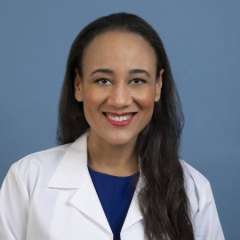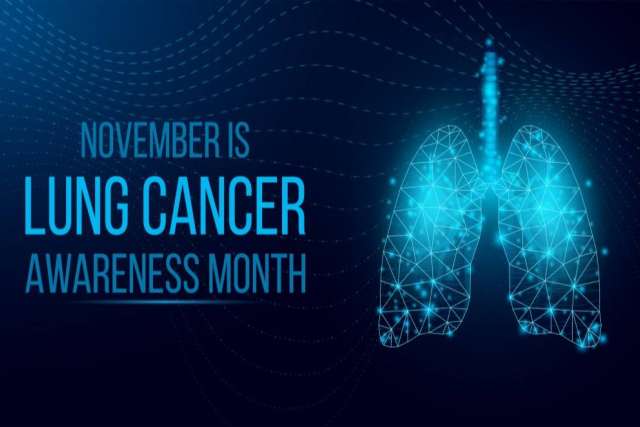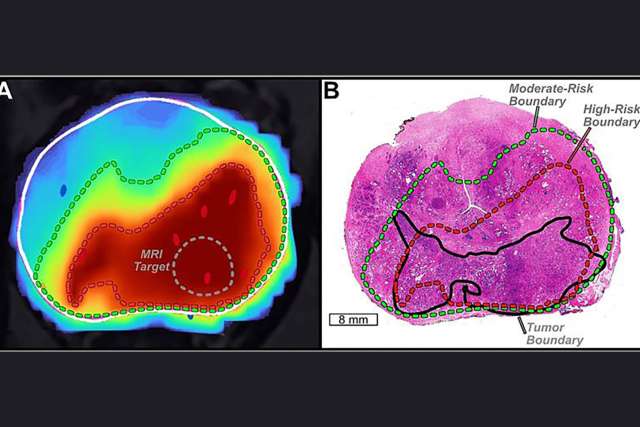Too few adults with a history of smoking are undergoing annual lung cancer screenings that can cut death rates by at least 20%.
Ashley Prosper, MD, a diagnostic radiologist and co-director of the UCLA Lung Screening Program, said only 5% to 15% of eligible people are getting low-dose computed tomography of the chest.
The low-dose CT scans can detect asymptomatic cases in those at highest risk of developing lung cancer. The scan requires a fraction of the radiation used in a standard chest CT.
“Lung cancer is the leading cause of cancer-related death in the United States. More individuals will die from lung cancer than any other cancer,” said Dr. Prosper, a member of UCLA's Jonsson Comprehensive Cancer Center. “We also know that it is really important to detect lung cancer early because outcomes are significantly influenced by the stage at diagnosis. The earlier we detect lung cancer, the better the survival rates.”
During November, which is Lung Cancer Awareness Month, Dr. Prosper wants to spread the word about broadened eligibility guidelines for screening, which now provide more access for women and African-Americans who may not have smoked enough to qualify under the previous requirements.
“Black men have developed and died from lung cancer more than any other group,” Dr. Prosper said. “We know that lung cancer screening is very effective, even, and especially, amongst our highest-risk population, Black men. In the Black population, we have a group that is at particularly high-risk, but if they are screened for lung cancer, we can significantly improve their outcomes.”
Qualifications for screening

In contrast to some other cancer screenings, such as mammograms or colonoscopies, the low-dose CT lung scan is a newer tool with more complicated criteria for insurance to cover the full cost.
Dr. Prosper said people must be eligible based on age and history of smoking. They are also required to undergo what’s called a “shared decision-making” process to understand risks and benefits and confirm that they would be interested in undergoing treatment if diagnosed with lung cancer.
“We’re trying to make sure that this highly specialized exam gets to those at the highest risk of lung cancer,” Dr. Prosper said.
For those who qualify, Medicare and most private insurance plans cover the scan at no cost to patients. However, a discrepancy in coverage currently exists between the two since a spring expansion in determining who qualifies.
In March 2021, the U.S. Preventive Services Task Force, whose evidence-based screening recommendations are considered the gold standard, lowered the age to start screening from 55 to 50, with an upper cutoff of 80.
The task force also lowered the amount of smoking history required to be screened from “30 pack years” to “20 pack years.” Pack-years are calculated by multiplying the number of packs of cigarettes smoked per day by the number of years an individual has smoked. For example, a person who smoked one pack of cigarettes per day for 20 years or two packs per day for 10 years would qualify.
For both private insurance and Medicare, the screening is covered only for people who currently smoke or who have quit within the past 15 years.
“We know that lung cancer screening is very effective, even, and especially, amongst our highest-risk population, Black men.
Dr. Ashley prosper
Unlike private insurers, the Centers for Medicare and Medicaid Services (CMS) has not yet adopted the change in guidelines put forth by the USPSTF. Medicare is using the old criteria of “30 pack years” and screening starting at age 55, which were issued by the task force in 2013. Those covered by Medicare are eligible for screening until age 77.
“We are currently in a limbo period where USPSTF and CMS are not aligned,” Dr. Prosper said. “However, a formal review of the updated guidelines was initiated by CMS on May 18, 2021, and is expected to be completed February 16, 2022.”
The revised guidelines are expected to help address the disparities faced by Black men, who despite smoking less than white men, on average, develop and die from lung cancer at higher rates.
“African-Americans tend to develop lung cancer at lower ages and with lower smoking pack-year histories,” Dr. Prosper said. “Beginning screening at earlier ages will help us to detect cancers earlier.”
The new guidelines also significantly increase eligibility for women. “The number of current and former smokers eligible for screening has essentially doubled based on these new guidelines,” Dr. Prosper said.
Dr. Prosper said that while UCLA has seen an increase in patient volume since the criteria expansion, she would like to see far more people with a history of smoking request a referral to the UCLA Lung Screening Program. The program also offers smoking cessation counseling services.
“We have a screening test that reduces lung cancer mortality by at least 20% but very few people are using it nationwide,” she said. “This is particularly concerning because we know it works so well.”
Screening process
To undergo the low-dose CT scan, patients lie on their backs on a scanner bed and briefly enter the “doughnut hole” of the scanner X-ray beam. They are instructed to take a deep breath to expand the lungs and hold for five to 10 seconds while high-resolution 3-D images of the lungs are captured.
The process limits the amount of radiation.
“We minimize radiation exposure for an exam we anticipate performing on an annual basis,” Dr. Prosper said. “Knowing that we’re going to ask to see you and scan your lungs at least once every 12 months, we aim to use the lowest radiation dose possible while maintaining high image quality.”
The images allow chest radiologiststo look for nodules, which are abnormal growths that can be a sign of lung cancer. A radiologist will evaluate the nodule’s features including size and density to distinguish between nodules of low and high concern.
Dr. Prosper notes that the vast majority of nodules found on lung screening exams are not cancer and that most screening exams result in a recommendation for a repeat screen in 12 months.
“We want to find lung cancer when it’s localized, meaning it hasn’t spread anywhere else in the body, it hasn’t gone to any lymph nodes,” she said. “An early diagnosis allows for the greatest number of treatment options.”
If suspicious nodules are found, a UCLA Health multidisciplinary team of radiologists, pulmonologists and thoracic surgeons review the findings and come to a consensus on how to proceed with any necessary follow-up.
Dr. Prosper said even in the case of a “negative” screen with findings that are not likely to be cancer, following up with your physician and returning for your next screening exam makes lung screening most effective.
5 Things to Know About Lung Screening with Low Dose CT
Learn more about the UCLA Lung Cancer Screening program.
Courtney Perkes is the author of this article.




